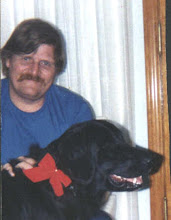A Profound Sense of Time
PZ Myers on the process that prompts the growth of all vertebrates from embryos to unspecialized segments to multicellular animals.
by PZ Myers
One of the fundamental features of the organization of multicellular animals is segmentation: We are initially built by subdividing a relatively undifferentiated embryonic tissue into smaller, repeated elements, like a stack of mostly identical building blocks. Look at an earthworm or a caterpillar or a maggot, and the organization is clear, with the wormlike animal showing the obvious seams and subdivisions that constitute its assembly from rings of similar chunks of tissue. Another property of this pattern
 of organization is that individual segments can then acquire specializations. In a caterpillar, the front end is modified with mouthparts and sense organs to form a head, while other segments will bear stubby limbs or be festooned with bristles or colored spots and patterns. Specialization is carried further when a maggot becomes a fly. Segments become much more obscure, retaining their visible identity in the abdomen, but are otherwise fused, elaborated upon, and display new features, such as wings or legs or mouthparts, that make the segments, ultimately, look very different from one another.
of organization is that individual segments can then acquire specializations. In a caterpillar, the front end is modified with mouthparts and sense organs to form a head, while other segments will bear stubby limbs or be festooned with bristles or colored spots and patterns. Specialization is carried further when a maggot becomes a fly. Segments become much more obscure, retaining their visible identity in the abdomen, but are otherwise fused, elaborated upon, and display new features, such as wings or legs or mouthparts, that make the segments, ultimately, look very different from one another.We vertebrates were also overtly segmented animals early in our embryonic development. As with the fly, the nature of our construction from similar blocks of tissue has been obscured by later additions in development, with limbs patched on and some segments (like human tails) reduced to near invisibility. Others (like significant portions of our brains) have been telescoped, contorted, and fused so that the boundaries between the original segments are detectable only to sensitive molecular probes. As with the fly's abdomen, we also retain some still apparent vestiges: the chain of vertebrae in our backs and the muscles of our torsos.
//more//

1 comment:
moo! On the subject of Evolutionary Development, this is a very enjoyable book for the layman:
Sean B. Carroll
Endless Forms Most Beautiful, The New Science of Evo Devo
rms
Post a Comment